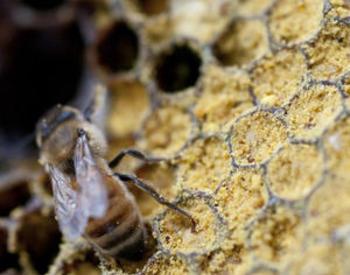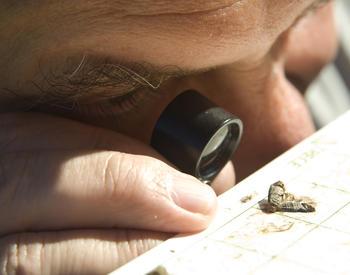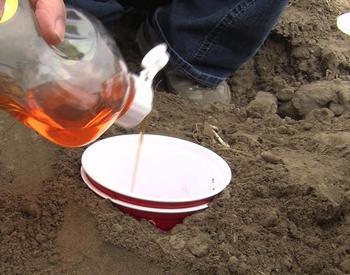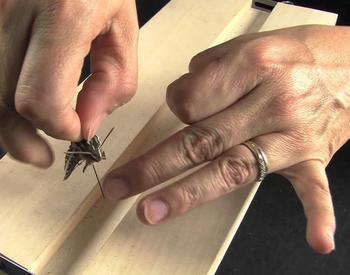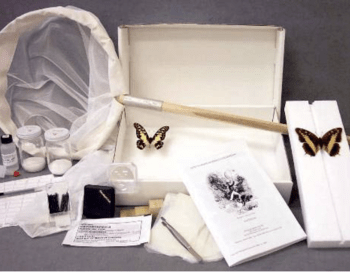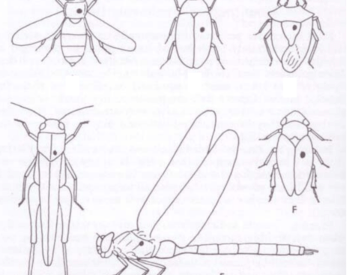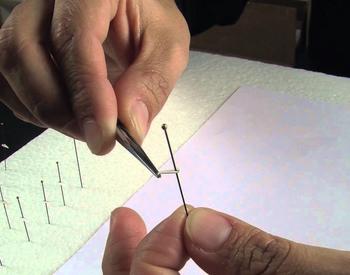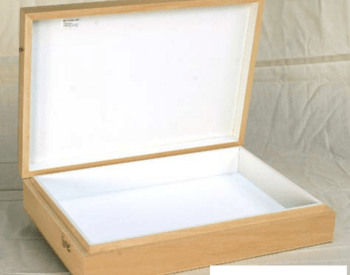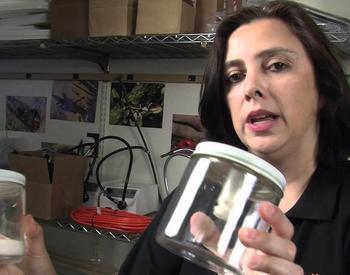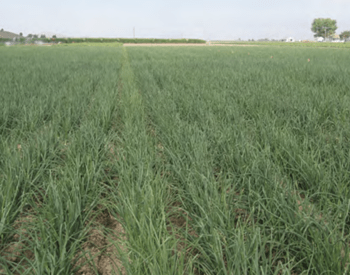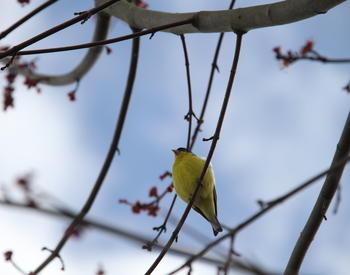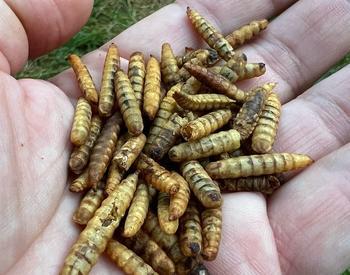Transcript
american foul brood is a rare but devastating disease found in honeybee colonies all around the world and even here in oregon today we have a chance to take a look at a frame that is fresh out of a colony that had crashed from american foul brood there are many different symptoms here and we'll also talk about how these symptoms may vary so let's let's take a look first of all Diagnosis at first glance you can tell that this colony has problems the brood pattern looks horrible this is actually a pretty classic brood pattern for american foul brood it's called the shotgun pattern and it once was a very large broodness the brood is going wall to wall but you can see it's very very spotty flip the other side as well very spotty brood pattern but that isn't always the case with some american foul brood american foul brood can have a pretty decent pattern but it's really just a matter of time before the colony tanks and looks like this so now let's take a closer look at the cells american foul brood affects mainly the capped brood stage or the pupil stage so you can see that there's a lot of perforated cappings here and sunken cappings these are classic symptoms of american falbrood um also in this frame we can see some oozing or sweating cappings here is some liquid that is exuding from what is underneath so now we see those symptoms let's get out our toothpick and we're going to uncap some of these to see what we might find underneath not a lot oh but i'm digging in there and finding this toffee or caramel colored larva and it's also roping so i'm doing the ropey test here stir it up and it ropes right on out this is a very very classic symptom of american foul brood nothing else will rope out like this so um so now we can be pretty certain that what that we have american foul brewed here but really notice this color [Music] dead decaying brood lots of perforated cappings um the capping the perforation is jagged it's on the edge of the cell so another symptom that we also see Scale is the scale so from head on the the the cells might look empty when you hold the frame at just the right angle i'm holding it from the top bars looking at it at the bottom of the cell i suddenly see all kinds of these little uh barely perceptible layers um on that cell and what that on the bottom of the cell what that is is a scale it's a petrified dried larva that is stuck fast to the bottom of the cell it's very difficult to remove european foul brood also has this scale however that's a lot easier to remove but american foul brood the scale is stuck very very hard and it's hard to remove it from the bottom so i'm going to have you take a look at the scale so here holding it from the top bars and you need to just have it at the just the right angle to see all of the scale now i'm going to show you one of my favorite frames that demonstrates scale really well Frame this is a frame of american foul brood and it's surprising because this comb is brand new this was a brand new colony everything is in great shape the frame looks good head on it looks like it looks absolutely empty all of these cells look empty but if you hold it just right you see scale everywhere so i'm going to turn this around for you and now you can see at the right angle the very bottom of the cell and you re you need some good light for this to happen have the sun over your shoulder and you'll see that this frame is loaded with scale so this frame if you took this from a dead out and didn't look at it very carefully you would think this is a really nice frame to reuse and put right back in your colony but what you're doing is you are transferring millions and millions of spores of american foul brood back into your nice healthy colony so whenever you have a dead out always take a look at that angle and look in the very bottom of the cell look for those scales just try to make that a habit so that's scale Pupil Tongue um and then a lot one of the last symptoms that i want to show you today is the pupil tongue the people tongue is not a very common symptom you see it in textbooks and here the pupil tongue is shown in a very different way in textbooks
you see the pupil tongue stuck to the top of the cell and it's kind of um a gooey mess down at the bottom um that's a classic symptom of american foul brood for some reason when the pupa dies that tongue is stuck to the top of the cell in this case you can see that this once was some kind of a people tongue situation but it's a little more dry and crunchy another one that's pretty easy to miss so don't count on that as a symptom for american foul brood because you may or may not see it another symptom that you can't count on is the smell it's called american foul brood for a reason it smells very bad it's a decaying it's not a decaying bee smell it's a bacterial terrible odor but not everybody can smell it so that's something that you can't quite depend on so let's go over what we just saw we saw a spotty brood pattern both sides this is that classic shotgun pattern but again it won't always look like that in every case of american foul brood so that's not something you can count on this is the worst case scenario this is a terrible very advanced case of american foul brood right here and when we take a closer look at the brood
we see perforated cappings because this affects the capped brood stage and underneath those cappings are dead pupae and we see sweaty cappings sunken cappings we saw the ropey test that toffee or caramel colored larvae or pupa pupae were roping out of the cells we saw um scale we saw scale in this frame and in this other one very hard to see unless you're holding it at the exact right angle we saw the pupil tongue i smell this you may or may not and and that's american foul brood i hope you never see this except in this video one last thing if you want to try to confirm your diagnosis if you're in the field American Foulbrood Test with a suspected case of american foul brood is you can use one of these test kits these are available at beekeeping supply stores and they're we find them to be pretty accurate
you need a separate one for american foul brood and european foul brood so we have the american foul brood one with us today and it comes with everything you need little um little scooper a pipette and the the test itself so here's the test blank and what we'll do is we're going to gather up some material with our our pipet and you can see it roping as we get it out of there another thing about ropiness is it's not always it not every cell will have contents that rope out if you get ropiness from one cell the neighbor cell might not rope and that's just because they're dying at different stages and um and so that's why you need to keep poking around so get those toothpicks out and just start poking around you want to just make sure that this is not what you have okay so we have our the contents of a couple of cells in this
shake it up all the instructions are on the back so you don't have to remember everything but we're going to shake this for 20 seconds okay and then we get our pipette that's included draw out some of the liquid and fill that reservoir and the liquid will start to make its way across the test kit or the test window here we will see a light we should see a line at the c which means control and if we don't see a line there we know that the test is um defective and so we need to do another test the t is the um line that we don't want to see a line in but we suspect that's what we'll see this takes a full three minutes for this to go across so we'll take some time to let that go so i see that the liquid is starting to move across the window and it hasn't been the full three minutes yet but i do see a line at the control so our test is working and i see a faint line here at the t and it doesn't matter if the line is faint or if it's strong a line is a line and that means that this is positive for american foul brood okay thank you very much again i hope you don't see this in your colonies but if you do we're here to help
American Foulbrood is a rare but devastating disease found in honeybee colonies all around the world, and even here in Oregon. Carolyn Breece from Oregon State University’s Honey Bee Lab shows us a honey bee frame that has crashed from American Foulbrood, and goes over how to spot the symptoms of AFB in your bee colonies.
